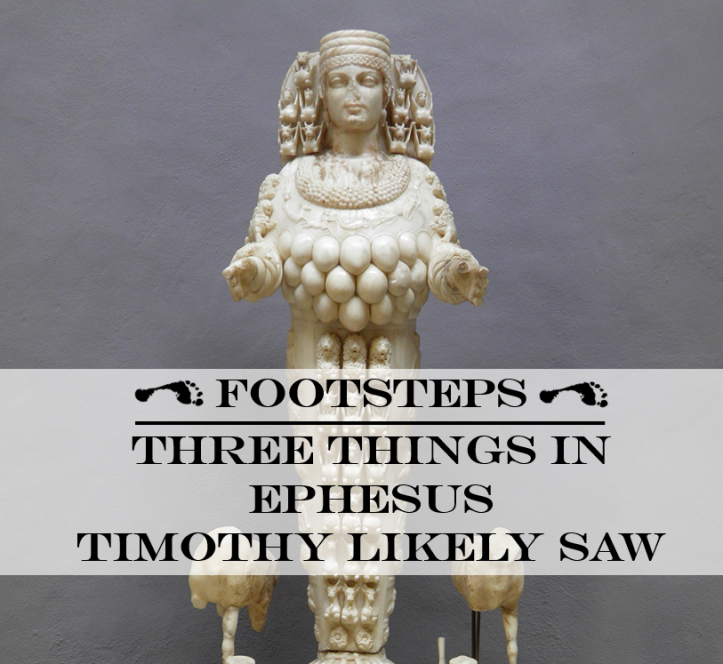
Timothy was a young man from the Lycaonian city of Lystra whom the Apostle Paul mentored and took as a traveling companion on his Second Missionary Journey. As his “true son in the faith” (1 Tim. 1:2), Timothy became an invaluable help to Paul in his ministry. Sometime after his release from his first imprisonment in Rome (Acts 28)1 Paul sent Timothy to Ephesus to combat false doctrine that was being taught there (1 Tim. 1:3).
Ephesus was like the New York City of Asia Minor in the New Testament-era. Pliny once called it, lumen Asiae, the Light of Asia.2 In the first century, only Rome, Alexandria and Antioch of Syria surpassed Ephesus in importance. Having ministered there for three years (Acts 20:31), the Apostle Paul obviously felt a loving concern for its citizens, and sometime around 63 AD3, having dispatched Timothy to work with the church in Ephesus, he wrote the epistle of 1 Timothy.
In the first century, Ephesus was a major port city in Asia Minor. However, by the medieval period silt from the Caster River had moved the coastline so far away from the city that it was eventually abandoned. While devastating to the residents of Ephesus, it was a blessing to modern archaeologists, as it meant the ancient city had not been built over in modern times.4 For the past 150 years, excavations have unearthed the ancient city that Paul and Timothy ministered in. Here are three things Timothy would have likely seen in Ephesus.
The Temple of Artemis
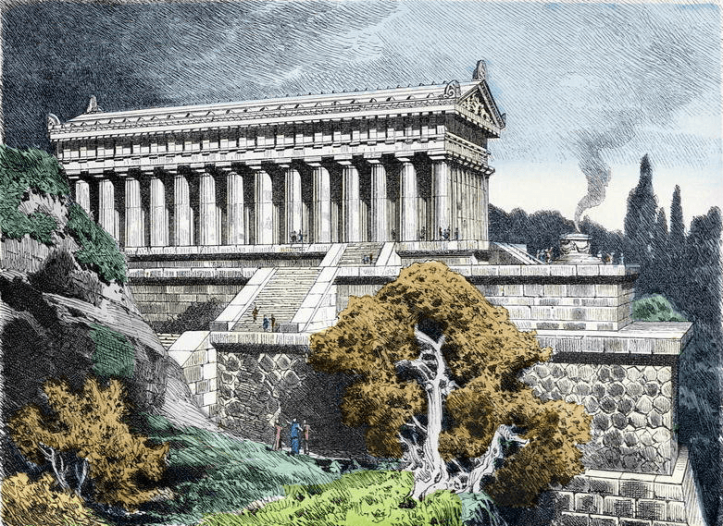
The worship of the goddess, Artemis (pictured in the title photo), dominated most facets of life in Ephesus during the time Timothy resided there. In Greek mythology, Artemis was the virgin daughter of Zeus and Leto, and was originally known as the hunting goddess, although she later becoming associated with virginity and protection. Over time, the goddess worshiped at Ephesus took on distinctly Ephesian qualities and eventually became know as “Artemis of the Ephesians.” The famed, Temple of Artemis, one of the Seven Wonders of the ancient world, lay just outside the city. Antipater of Sidon said that it surpassed the other wonders, and that when he saw the house of Artemis “those other marvels lost their brilliancy.”5 Artemis was more than just the primary deity worshiped in the city; much of the city’s immense wealth was tied to her cult. The treasury in the Temple of Artemis acted like a bank, where everyone, from the average citizen to rich businessmen, deposited their money for safekeeping. The Artemisian “bank” eventually controlled the finances for much of that part of the world.6

John Turtle Wood began excavating at Ephesus in 1863, and after six years of searching, he finally discovered the Temple of Artemis. It was originally built by Croesus, the Lydian king of Sardis in 560 BC, and was rebuilt after it was burned by a fame-seeking madman in 356 BC. It was the first monumental building ever made of marble and was, at one time, the largest building in the Greek world, measuring 377 feet by 197 feet in size.7 The temple featured a cella, or holy of holies, that was 70 feet wide and open to the sky. A statue of the goddess, Artemis, stood behind a 20-foot square alter in the midst of the cella.8 The temple was sacked by the Goths in 263 AD and eventually destroyed by Justinian in the sixth century. Today, only the remains of the foundations and a single column stand at the site, although some of the sculptured columns from the temple are in the British Museum.
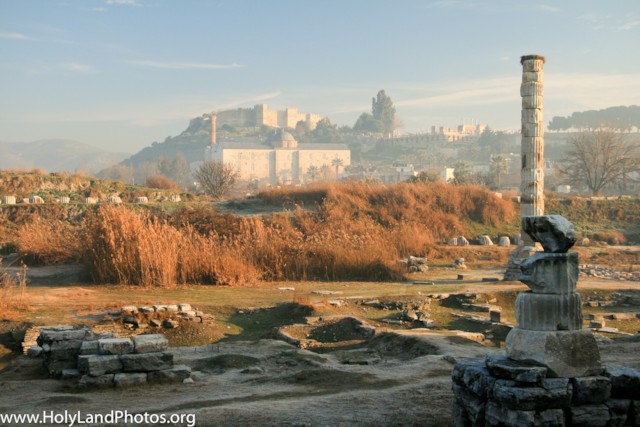
It is noteworthy that the biblical descriptions of the worship of Artemis are affirmed by inscriptional evidence. The name “Artemis of the Ephesians” – chanted for hours by the fanatical crowd in Acts 19:34 – is widely attested in ancient writings. Indeed, the most common surname of the goddess in Pausanias’s works is “Artemis of the Ephesians.9 Another inscription describes Ephesus as, “greatest metropolis of Asia, [and] the thrice-honored temple guardian of the venerable Ephesians.”10 It uses the same Greek word, neokoros, as the Bible does to describe Ephesus as the “guardian” of the temple of Artemis. The biblical description of the worship of Artemis in Ephesus during the time of Paul and Timothy is accurately reflected in the archaeological record. Statues and references to statues of the goddess Artemis were all throughout the city. Timothy could hardly have missed them. One wonders if he was as distressed at the idol worship around him as his mentor had been in Athens (Acts 17:16).
The Marketplace
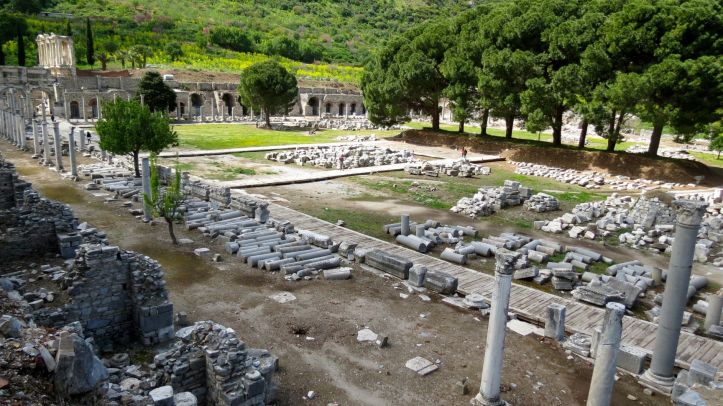
When Paul wrote to Timothy at Ephesus, he instructed him to “stop drinking only water, and use a little wine because of your stomach and your frequent illnesses” (1 Tim. 5:23). Timothy likely purchased some of his food and wine in the Marketplace – the commercial agora.
The commercial agora was located in the midst of the city near the Theater. Excavations have revealed that it was originally built in the third century BC, but had been renovated by both Augustus and Nero.11 The marketplace was square-shaped, with each side measuring 360 feet in length. The north side of the agora was left open, while the other three sides were covered by a portico that had rows of shops within. In the middle of the courtyard of the marketplace was a sundial and water-clock 12
Being a port city, much trade was done in Ephesus, and the commercial agora was a bustling place. Scripture records that craftsmen who sold their wares there, like the Silversmiths, “brought in a lot of business” and received “a good income.” (Acts 19:24-25). The archaeological record is filled with evidence of the wealth of many in Ephesus.13 When Paul wrote to Timothy at Ephesus he instructed him to “command those who are rich in this present world not to be arrogant nor to put their hope in wealth, which is so uncertain, but to put their hope in God, who richly provides us with everything for our enjoyment.” (1 Tm 6:17).
The Great Theater
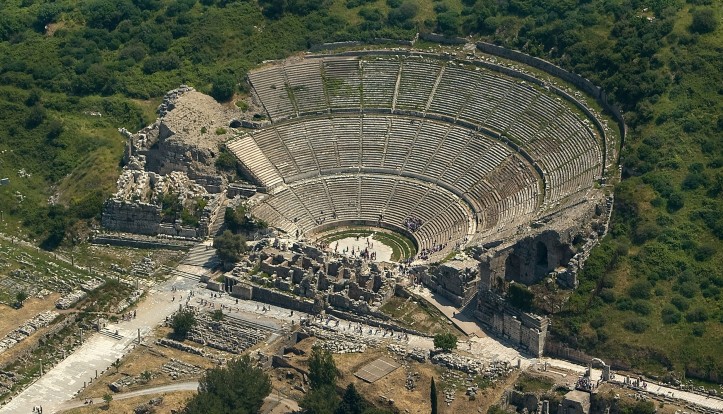
If one structure dominated the landscape in ancient Ephesus it was the great theater. Built in the Hellenistic era as a Greek theater, it was later converted to a Roman theater during the reigns of Claudius (ca. 41-54 AD) and Nero (54-68 AD).14 The theater could seat over 24000 people, with the topmost row of benches almost 100 feet in the air. It was the largest theater in the ancient world and the only one whose stage had seven doors.15 An inscription was discovered in the theater, written in Latin and Greek, which named a Roman official who had provided a silver statue of Artemis to be displayed there during civic meetings.16
How many times did Timothy look to this structure and recall the chaotic events described in Acts 19, when a riotous crowd stormed the theater?
Summary
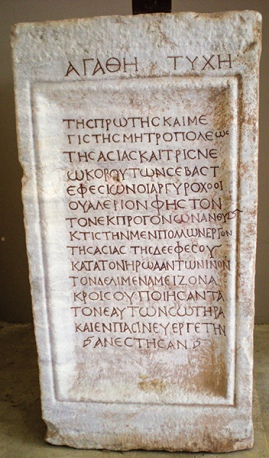
Archaeology allows us to understand the people and culture of ancient Ephesus. This, in turn, provides an important contextual link with the New Testament. The books of 1 and 2 Timothy were not written in a vacuum. When the Apostle Paul left Timothy in Ephesus to work with the church, it was within a specific culture that we can now understand better as a result of 150 years of excavations. For example, Paul warned Timothy about Alexander the coppersmith, who did much harm to him there (2 Tim. 4:14). An inscription was unearthed in Ephesus that refers to the workplace of “Diogenes the coppersmith.”17 Another inscription, discovered in 1984, declared that it had been erected by the silversmiths of the city, testifying to their prominence.18 These illuminate the various trades in ancient Ephesus and, along with the structures mentioned above, help us understand the city in which Timothy lived and ministered.
Title Photo Credit: Carole Raddato / Wikimedia Commons / CC BY-SA 2.0
Endnotes
1 Eusebius 2.22.2: “Thus after he had made his defense it is said that the apostle was sent again upon the ministry of preaching, and that upon coming to the same city a second time he suffered martyrdom. In this imprisonment he wrote his second epistle to Timothy, in which he mentions his first defense and his impending death.”
2 Pliny H. N. v. 29, as quoted in “Ephesus,” The Latin Library, http://www.thelatinlibrary.com/historians/notes/ephesus.html (Accessed Aug. 13, 2019).
3 Daniel B. Wallace, “1 Timothy: Introduction, Argument, Outline.” Bible.org, June 28, 2004. https://bible.org/seriespage/15-1-timothy-introduction-argument-outline (Accessed Aug. 13, 2019).
4 “Ephesus During the Time of Paul,” in NIV Archaeological Study Bible (ed. Walter C. Kaiser Jr and Duane Garrett; Grand Rapids: Zondervan, 2005), 1968.
5 Antipater, Greek Anthology IX.58.
6 John W. Cowart. “Ephesus: A Wonder of the World.” http://www.cowart.info/Ephesus/ephesus.html (Accessed Aug. 14, 2019).
7 John McRay, Archaeology and the New Testament, (Grand Rapids: Baker Academic, 1991), 256.
8 Howard F. Vos, Archaeology in Bible Lands (Chicago: Moody Press, 1977), 321.
9 Sandra Glahn, “The Identity of Artemis of the Ephesians in First-Century Ephesus.” Bibliotheca Sacra (172:687). 1753. 316–34.
10 James R. Edwards, “Archaeology Gives New Reality to Paul’s Ephesus Riot,” Biblical Archaeology Review, 42:4 (July/August 2016): 26.
11 Alfred Hoerth and John McRay, Bible Archaeology: An Exploration of the History and Culture of Early Civilizations, (Grand Rapids: Baker Books, 2005), 220.
12 “Commercial Agora,” Ephesus. http://www.ephesus.us/ephesus/agora.htm (Accessed Aug. 15, 2019).
13 Bryan Windle, “Evidence from Ephesus for the Reliability of Scripture,” Bible and Spade Vo. 31, no. 3 (Summer 2018), 63-64. Online: https://www.academia.edu/37805312/Ephesus_A_Case_Study_for_the_Reliability_of_Scripture (Accessed Aug. 15, 2019).
14 Alfred Hoerth and John McRay, Bible Archaeology: An Exploration of the History and Culture of Early Civilizations, (Grand Rapids: Baker Books, 2005), 221.
15 Ibid. 227.
16 John McRay, Archaeology and the New Testament, (Grand Rapids: Baker Academic, 1991), 259.
17 Ibid. 259.
18 James R. Edwards, “Archaeology Gives New Reality to Paul’s Ephesus Riot,” Biblical Archaeology Review, 42:4 (July/August 2016): 26.
